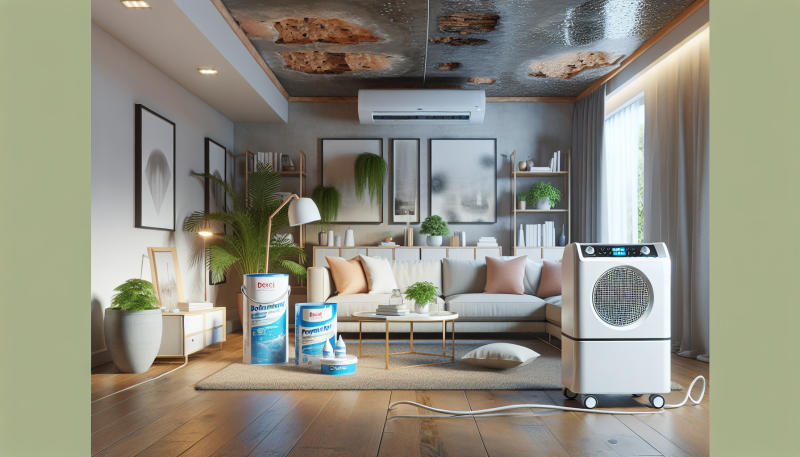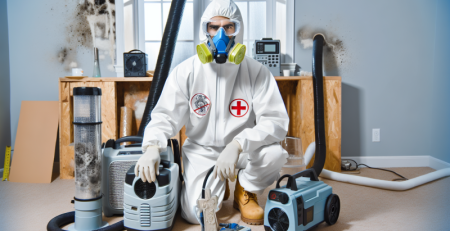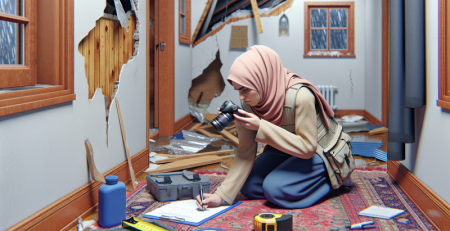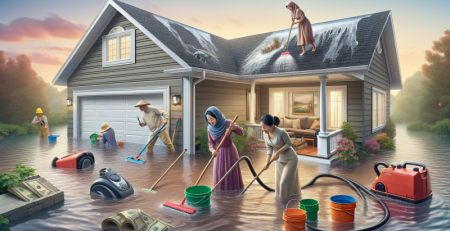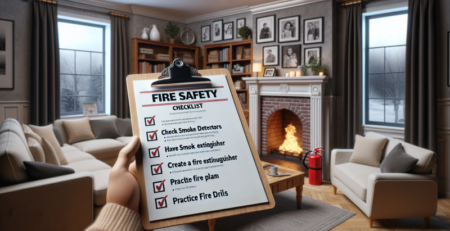Water Damage: How to Prevent Mold Growth
Water damage can lead to serious issues in your home, particularly the growth of mold, which poses health risks and can cause significant property damage. At Kraus Restoration, NJ’s leaders in water damage restoration, we understand the urgency of addressing water-related problems promptly and effectively. Our mission is to help homeowners and property managers in Central and Northern New Jersey recover from water, flood, and mold damage with our professional 24/7 emergency services.
Preventing mold growth is crucial after experiencing water damage, as mold can begin to develop within 24 to 48 hours in damp conditions. Our expert team specializes in water cleanup, mold remediation, and fire damage restoration, ensuring that your property is thoroughly restored and safe. With our IICRC certified professionals, we provide comprehensive services that not only address immediate water damage but also help prevent future mold issues. By understanding the importance of quick action and proper restoration techniques, you can safeguard your home from the dangers of mold growth. Trust Kraus Restoration to guide you through the process and restore your peace of mind.
Understanding the Conditions That Foster Mold Growth
Mold is a common problem that can arise in homes and buildings, particularly following incidents of water damage. Understanding the conditions that foster mold growth is crucial for effective prevention and remediation. Mold thrives in environments that provide the right combination of moisture, warmth, and organic material.
One of the primary conditions that promote mold growth is the presence of excess moisture. According to the Environmental Protection Agency (EPA), mold can begin to grow within 24 to 48 hours after water damage occurs. This rapid growth underscores the importance of addressing water issues promptly. Common sources of moisture include leaks from roofs, plumbing, or appliances, as well as high humidity levels in areas such as bathrooms and kitchens.
Temperature also plays a significant role in mold proliferation. Mold generally prefers temperatures between 77°F and 86°F (25°C to 30°C), which coincides with typical indoor temperatures. However, some mold species can grow in cooler conditions, making it essential to monitor and control indoor temperatures, especially in areas prone to dampness.
Another critical factor is the availability of organic materials for mold to feed on. Mold can thrive on a variety of surfaces, including wood, drywall, carpet, and even dust. This means that homes with a lot of organic materials, particularly those that are not regularly cleaned, are at a higher risk for mold growth.
Ventilation is also a key element in preventing mold. Poorly ventilated spaces trap moisture and create a conducive environment for mold. Areas such as basements, attics, and bathrooms should be equipped with proper ventilation systems to allow for air circulation and moisture control.
In addition to these factors, the overall condition of a building can influence mold growth. Buildings that are older or poorly maintained may have more vulnerabilities, such as cracks in walls or foundations that allow water intrusion. Regular inspections and maintenance can help identify and mitigate these risks before they lead to significant mold issues.
To summarize, the conditions that foster mold growth include:
- Excess moisture from leaks or high humidity
- Warm temperatures, particularly between 77°F and 86°F
- Availability of organic materials for mold to feed on
- Poor ventilation that traps moisture
- Overall building condition and maintenance
By understanding these conditions, homeowners and property managers can take proactive steps to prevent mold growth. This includes promptly addressing water damage, maintaining proper ventilation, and regularly inspecting and maintaining the building’s structure.
As the EPA states, "The key to mold control is moisture control." Therefore, implementing effective water damage prevention strategies is essential for maintaining a healthy indoor environment. For more information on how to prevent mold growth after water damage, you can explore our water cleanup services or learn more about our mold cleanup services. If you have any questions or need assistance, feel free to contact us.
By being proactive and informed about the conditions that foster mold growth, you can protect your home and ensure a safe living environment for you and your family.
Effective Strategies for Water Damage Prevention and Control
Water damage can lead to significant issues, including the growth of mold, which poses health risks and can damage property. To effectively prevent mold growth, it is crucial to implement strategies that address water damage before it becomes a problem. One of the most effective strategies is to ensure proper drainage around your property. This involves maintaining gutters and downspouts to direct water away from the foundation, as well as grading the landscape to promote drainage. Regularly cleaning gutters and ensuring that downspouts extend at least six feet from the foundation can significantly reduce the risk of water pooling near your home.
Another important strategy is to monitor and repair any leaks promptly. This includes checking plumbing fixtures, roofs, and windows for signs of water intrusion. Even small leaks can lead to significant water damage over time, creating an environment conducive to mold growth. By conducting regular inspections and addressing any issues immediately, homeowners can prevent water from accumulating in hidden areas, such as behind walls or under floors.
Controlling indoor humidity is also essential in preventing mold growth. Maintaining humidity levels below 60 percent can help inhibit mold development. Using dehumidifiers in damp areas, such as basements and bathrooms, can be an effective way to manage moisture levels. Additionally, ensuring proper ventilation in these areas can help reduce humidity. Installing exhaust fans in bathrooms and kitchens, and opening windows when weather permits, can promote air circulation and decrease moisture buildup.
In the event of water damage, whether from a flood or a plumbing issue, it is crucial to act quickly. The faster you can dry out affected areas, the less likely mold will have the opportunity to grow. This may involve using fans, dehumidifiers, and even professional water cleanup services to ensure that all moisture is removed. If you are dealing with extensive water damage, it may be beneficial to consult with professionals who specialize in water cleanup to ensure that the area is thoroughly dried and treated.
Additionally, using mold-resistant products during construction or renovation can provide an extra layer of protection against mold growth. This includes mold-resistant drywall, paints, and insulation materials that are designed to withstand moisture. When building or renovating, consider incorporating these materials to create a more resilient structure.
Lastly, educating yourself and your family about the signs of mold growth and water damage can empower you to take action before problems escalate. Regularly check for discoloration on walls, musty odors, and visible mold, and address any concerns immediately. By being proactive and implementing these effective strategies, you can significantly reduce the risk of water damage and mold growth in your home.
For more information on how to protect your home from water damage and mold, feel free to explore our mold cleanup services or contact us for expert advice on maintaining a safe and healthy living environment.
In conclusion, preventing mold growth after water damage is crucial for maintaining a healthy living environment. By acting quickly to address any water intrusion, ensuring proper ventilation, and utilizing dehumidifiers, you can significantly reduce the risk of mold development. Regular inspections and maintenance of your property will also help identify potential issues before they escalate. Remember, mold thrives in damp conditions, so keeping your home dry and well-ventilated is key. If you do encounter water damage, don’t hesitate to seek professional help to ensure thorough remediation. By taking these proactive steps, you can protect your home and your health from the harmful effects of mold. Stay vigilant, and keep your living spaces safe and mold-free!
